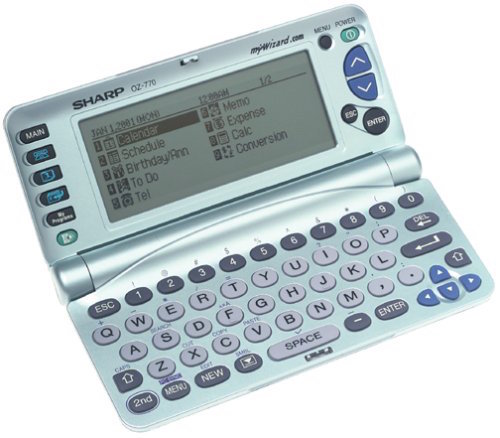Loading
...
...
I can only file this project in my "delights" category because its trickery is more impressive than its engineering.
One of the lessons I learned from watching my friends on Adeus is that the computer shouldn't be too good at matching statements. If you follow real conversation between human beings, we are constantly moving to irrelevant points, inadequately answering questions, and generally following very nonlinear paths. In short, the map of a typical conversation is erratic to begin with.
Fake chat didn't pass the Turing test either, but it did completely fool my friends into thinking they were talking in and being acknowledged in a chatroom.
I had recently acquired a new Sharp Wizard. This was a little $80 hinged device in silver plastic marketed for keeping notes and appointments. However, it also came with a data cable for syncing data and uploading apps from its single page "app store". Programs were written in BASIC, which I had already learned for Adeus.
The concept used for Fake Chat was so simple, it's almost impossible to believe it would have fooled so many people. I copied and pasted real dialogue from a chatroom and had each line print out to a chatroom pane at random intervals. The user was given a small input box at the bottom where he could enter in text to send to the chat room at any time. The text would print into the pane just as normally as the randomly printed lines.
Every once in a while I'd include a line referencing the user (programmatically inserting the username in lowercase), saying something very general like, "username, what are you talkin bout?"
I told my friends my Wizard could connect to the internet via satellite. On a few occasions, my friends would spend 10-20 minutes just talking to nobody and never suspecting (to this day) the whole experience was a hoax.
